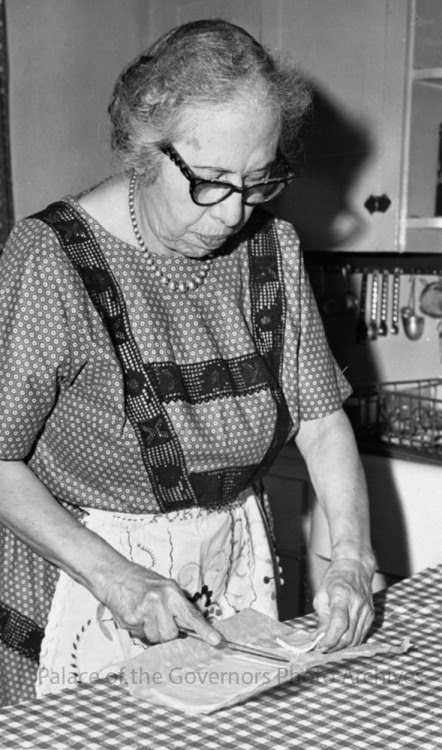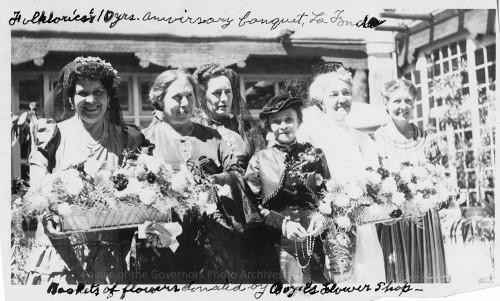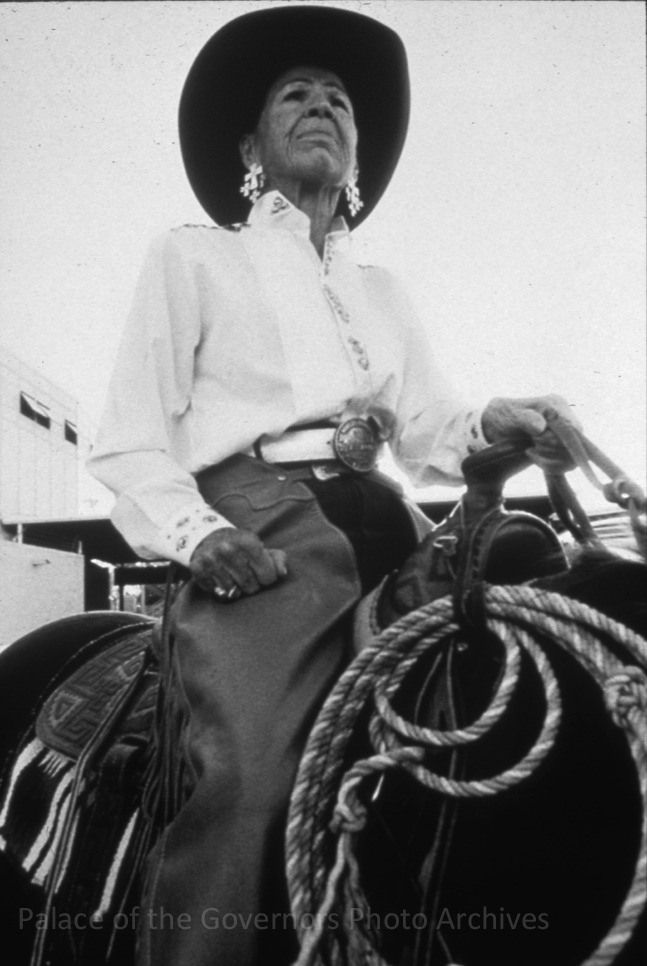Here’s a tale of how the development of the upcoming Home Lands: How Women Made the West exhibit is mimicking history–in particular, an archival image taken by Russell Lee that’s become the cornerstone of our advertising for the exhibit.
First up, the historical image:
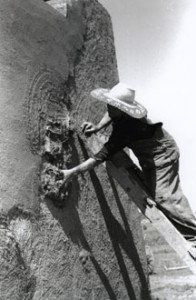
- Spanish American Woman plastering, Chamisal, New Mexico, photograph by Russell Lee, 1940. Courtesy Library of Congress
Next, the modern-day image:
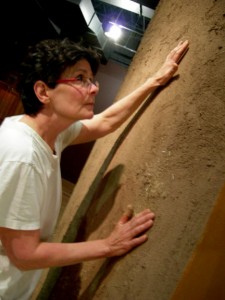
- Plasterer Kathy Brennan checks the finish on her mud wall in the exhibit space for “Home Lands”
See the connection?
 Exhibition designer Caroline Lajoie wanted visitors to Home Lands (opening June 19, btw) to be greeted by something elemental to the Rio Arriba section of the exhibit. At that heart is the role earth played in how women prevailed over often-daunting conditions. Whether they were using it to form cooking vessels and, eventually, fine-art pottery, or mudding the walls of their homes and churches, or wheeling, dealing and preserving the real estate of northern New Mexico, the dirt beneath of our feet has been a constant thread in the story of New Mexico women.
Exhibition designer Caroline Lajoie wanted visitors to Home Lands (opening June 19, btw) to be greeted by something elemental to the Rio Arriba section of the exhibit. At that heart is the role earth played in how women prevailed over often-daunting conditions. Whether they were using it to form cooking vessels and, eventually, fine-art pottery, or mudding the walls of their homes and churches, or wheeling, dealing and preserving the real estate of northern New Mexico, the dirt beneath of our feet has been a constant thread in the story of New Mexico women.
And now that story is on the wall, too, thanks to plasterer Kathy Brennan.
Brennan used American Clay Earth Plaster to mud the exhibit’s title wall in the style of how women have plastered the walls of adobe buildings for centuries. “It’s a type of veneer plaster,” she said, “that you can transfer to sheetrock.”
Although the precise recipe’s a secret, it includes clay, marble dust and natural pigments “straight out of the earth,” Brennan said.
 She also added bits of straw and twigs for that old New Mexico look and used the Russell Lee image as an inspiration, though she didn’t don the overalls and straw hat of the photo’s plasterer.
She also added bits of straw and twigs for that old New Mexico look and used the Russell Lee image as an inspiration, though she didn’t don the overalls and straw hat of the photo’s plasterer.
“When Caroline called me, I thought it was really exciting–how to figure out how to come up with the color she was looking for and so on. I liked it, but it was a bit nerve-wracking at the same time. Still, I was really psyched. I love the photograph.”
This is her first experience mudding in a museum. Mostly, she works on home interiors, where people often ask her to include their handprints, their dogs’ pawprints, or their grandchildren’s footprints.
Home Lands focuses on the lives of women across the centuries in three regions–New Mexico’s Rio Arriba, Colorado’s Front Range, and Washington State’s Pugent Sound. Originally organized by the Autry National Center in Los Angeles, it features additional materials from the History Museum’s collections. It joins three smaller exhibitions–Ranch Women of New Mexico, New Mexico’s African American Legacy: Visible, Vital, Valuable, and Heart of the Home to put a spotlight on the unsung heroes of American history.
You can see Brennan’s mud wall in person June 19-Sept. 11, on the second floor of the History Museum, just north of the Santa Fe Plaza. Our grand opening, with refreshments in the Palace Courtyard, will be from 2-4 pm on Sunday, June 19. Admission is free on Sundays to NM residents.
